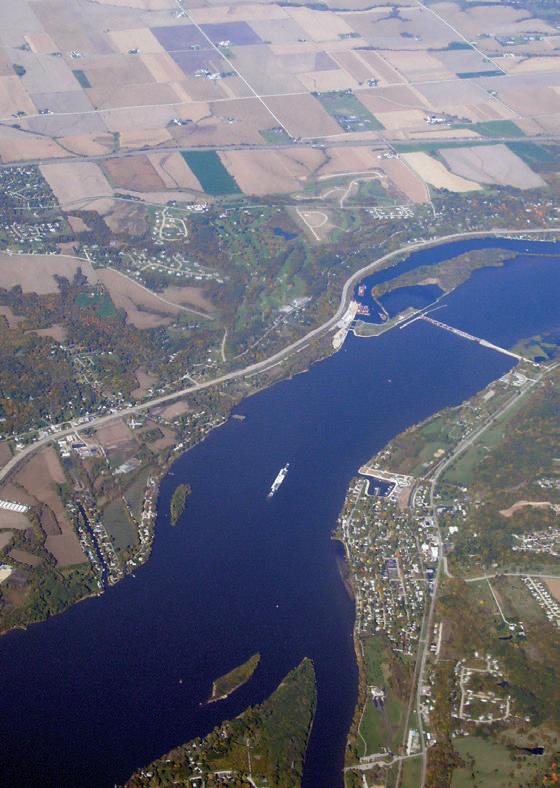
She's one of thousands of people who work on the Mississippi River to keep it safe for boats traveling along its length.
Why did you start working on the river?
I grew up around the La Crosse area in Wisconsin. I love anything outdoors. My dad used to take me to Lock and Dam 7. We'd fish off the wall there.
One summer after I graduated from college, the U.S. Army Corps of Engineers was looking for clerks. I worked that summer as a clerk at Lock and Dam 7 in La Crescent, Minnesota. I started working year-round as a clerk in 1982.
In 1989, the Corps came out with a program to get more women working on the lock. I applied. I had to complete two years working at a lock and dam. If I didn't care for it, I could get my clerk job back.
I absolutely loved it! It was basically outdoor work, putting boats through the lock. I worked a swing shift-one week I worked during the day, the next week I worked 4 p.m. to midnight, and the week after that I worked midnight to dawn. That was hard, but I made it through.
I became an operator on the locks and dams. I did that for a few years. Then I worked as a head operator before I became lockmaster at Lock and Dam 6 in Trempealeau, Wisconsin, in December 2011. I am one of three women lockmasters in the St. Paul district.
What does a lockmaster do?
A lockmaster is in charge of a site on river. There are 29 locks and dams between St. Paul and St. Louis. Each one has a lockmaster. Every morning, Water Management in St. Paul sends orders about whether we should open the dam gates or close the dam gates or just stay the same, to keep the water at the right level. My main job is to make sure everything is running smoothly and to ensure we have enough people on site to get boats through the lock safely.
Can you explain the lock and dam system?
This story is from the April 2023 edition of Cobblestone American History Magazine for Kids.
Start your 7-day Magzter GOLD free trial to access thousands of curated premium stories, and 9,000+ magazines and newspapers.
Already a subscriber ? Sign In
This story is from the April 2023 edition of Cobblestone American History Magazine for Kids.
Start your 7-day Magzter GOLD free trial to access thousands of curated premium stories, and 9,000+ magazines and newspapers.
Already a subscriber? Sign In

Eye in the Sky
An interview with Joe Piotrowski

Airborne Animals
Humans have taken to the skies in balloons, gliders, and airplanes-but we're not alone among the clouds. Animals of all sorts have evolved to harness wind power.

TAKING OFF
The Wright brothers expected airplanes to “take off,” but even they might be amazed at the way the airline industry has become big business. In the past, it was expensive to send something by plane.

GROWTH OF AN INDUSTRY
After their historic flight at Kitty Hawk in 1903, Wilbur and Orville Wright returned to Dayton, Ohio. They spent the next few years making adjustments and building additional versions of their powered aircraft in their bicycle shop.

WHY KITTY HAWK?
The Wright brothers searched carefully for the best place to test their gliders and flying machines. Their main concern was for good, steady winds. But they also hoped to find a remote location to allow them to perform tests away from the public eye.

Two Brothers From Ohio
Most people do not realize that the Wright brothers—Wilbur, born in 1867, and Orville, born in 1871—performed various scientific experiments before inventing their aircraft. For as long as anyone in their hometown of Dayton, Ohio, could remember, the Wright boys had worked on mechanical projects.

A Helping Hand
May 6, 1896. A group of people who had gathered beside the Potomac River, just south of the U.S. capital, grew quiet. Then, it erupted in cheers as a small, unmanned aircraft took to the skies and flew for more than half a mile. The flight came seven years before the Wright brothers’ first manned, powered flight. The inventor of the aircraft was Dr. Samuel Pierpont Langley.

THE IDEA MEN
People dreamed of flying thousands of years before the Wright brothers found success near Kitty Hawk, North Carolina. These dreamers, such as Leonardo da Vinci, studied birds flying and imagined how humans might do the same—if only they had wings. Other men developed a more hands-on approach to the topic. Early inventors made wings of cloth, glue, and feathers and tied these creations to their arms in an attempt to imitate nature.

Da Vinci's 4 Designs
Have you ever wondered how a bird flies? Leonardo da Vinci (1452–1519) did. He thought that understanding how a bird flies would provide the key to human flight. So, what did da Vinci learn from birds?

Silken Wings
Seven hundred years before the Wright brothers began experimenting with human flight, the Chinese had already mastered its secrets—with kites.